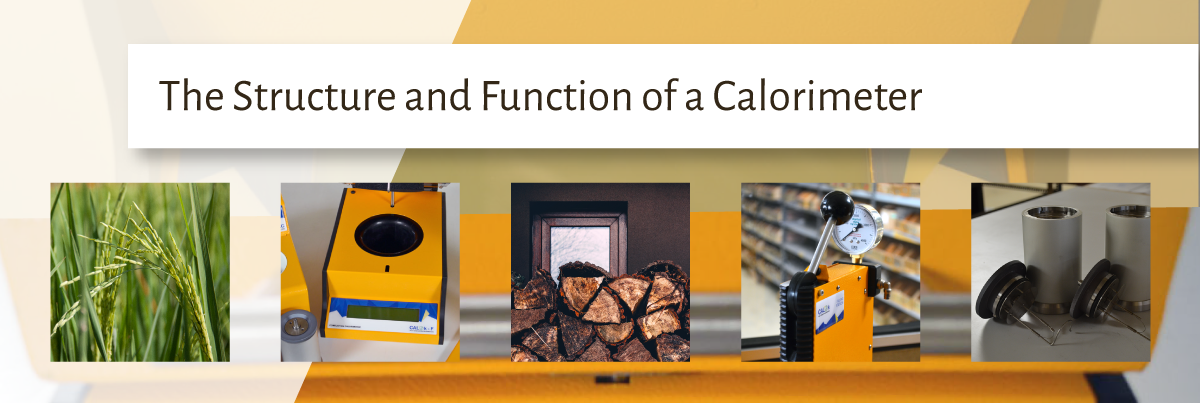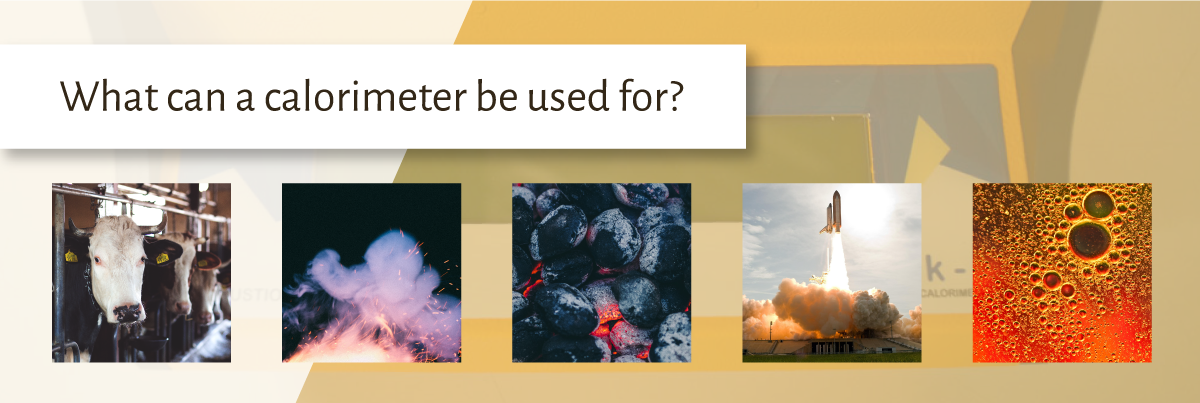
A calorimeter is a device, or machine, used for calorimetry. Calorimetry is the process of measuring the heat of a chemical reaction or the physical changes as well as the heat capacity.
Some of the common types of calorimeters include :
- Differential Scanning Calorimeters (Based on thermo-analytical methods, where the difference in the amount of heat required for increasing the temperature of a sample and reference is measured as a function of temperature. There are two sub-types - heat flux differential scanning calorimeters and modulated temperature differential scanning calorimeters).
- Isothermal Titration Calorimeter (They are used primarily to determine thermodynamic parameters of reactions in a solution. They are used to study the binding of small molecules with larger macromolecules)
- Accelerated Rate Calorimeters
- Bomb Calorimeters (A constant-volume calorimeter. Measures the internal energy change between reactants and products. They have the ability to withstand large pressure while the reaction is being measured.
A simple calorimeter just consists of a thermometer attached to a metal container full of water suspended above a combustion chamber.
To find the enthalpy (heat change) of a substance (samples like oil and coal) the sample is added to a calorimeter and the initial and final temperature (before the reaction starts and after the reaction finishes) are noted and recorded. The DDS Calorimeters range does this so the operator won't need to make manual calculations. The temperature change depends on the sample mass, the mass of the heated apparatus and the sample substance. (this multiplied by the mass and the specific heat capacity of the substance gives a value for the energy given off or absorbed during the reaction). This manual method and calculation is mainly used in academic teaching when learning the theory of calorimetry.
Three different techniques can be applied to calorimetry : temperature change (adiabatic/isoperibol) in which the temperature change of the calorimeter measuring cell can be converted to heat change of the reaction occurring in the calorimeter; power compensation (isothermal) in which the reaction and a controlled heater act as two heating sources and are kept at the same heating power so the heat change is equal to the integration of the controlled heat power over the measurement time; and heat conduction where the temperature change caused by the heat produced in a reaction is recorded as a small voltage through heat flow sensors.

A bomb calorimeter is a type of constant-volume calorimeter used in measuring the heat of combustion of a particular reaction. Bomb calorimeters have to withstand the large pressure within the calorimeter as the reaction is being measured. Electrical energy is used to ignite the fuel; as the fuel is burning, it will heat up the surrounding air, which expands and escapes through a tube that leads the air out of the calorimeter. When the air is escaping through the copper tube it will also heat up the water outside the tube. The change in temperature of the water allows for calculating calorie content of the fuel. - Wikipedia
A bomb calorimeter consists of a small cup (crucible) used to contain the sample of oil, fuel or coal, pressurized oxygen (either via manual or automatic oxygen filling), a stainless steel bomb vessel (screw cap vessel), water (the DDS Calorimeters systems are waterless; the water being replaced by a thick aluminum sleeve), a thermometer (the DDS Calorimeters bomb vessels have built in linear temperature sensors), and the insulating container to prevent heat flow from the calorimeter to the surroundings, and an ignition circuit connected to the bomb vessel. No water needed! By using stainless steel for the bomb vessel, the reaction will occur with no volume change observed.
COMBUSTION OF NON-FLAMMABLES
The high pressure oxygen in the bomb calorimeter system can assist with the burning of combustibles that are not normally flammable, which is needed for some procedures where substances don't combust completely.
A bomb calorimeter only allows heat to be exchanged. Such a system is called a closed system. An example of a closed system is a balloon being heated so the gas inside expands. No matter is exchanged, only heat.
PRECAUTIONS WHEN WORKING WITH CALORIMETERS
There is an explosion risk involved with operating an oxygen bomb calorimeter system when highly combustible samples are being analyzed. Laboratory personnel should adhere to the safety instructions laid out in the instruction manual and maintain parts on a regular basis. Seals and O-Rings should be inspected before every firing.

THE PROCESS OF DETERMINATION
An empty crucible is placed inside the balance (crucibles are supplied in the installation kit when ordering a complete system). The balance is then tared and the sample is placed inside the crucible to read the exact weight of the sample. The weight of the sample is then entered into the calorimeter (automatically or manually, depending on the laboratory setup).
The crucible containing the sample is then placed into the complete lid assembly which should have the firing cotton attached to the firing wire, ready for firing. The cotton thread is attached to the firing wire that is attached to two electrodes which will ignite the sample during ignition.
The complete lid assembly is screwed/attached to the bomb vessel body where it is sealed. This is done by hand to ensure the lid is not over tightened. The vessel is then charged with 30 bar of oxygen (automatically or manually with the external filling station). The prepared vessel is then lowered into the DDS Calorimeter.
The calorimeter lid is closed and the determination can begin.
The DDS Calorimeters range requires little to no attention from the operator during the determination process, making is easy to use and operator friendly.

WHAT CAN A CALORIMETER BE USED FOR?
- Biochemistry/Thermochemistry in calculating the enthalpy, stability and heat capacity
- Thermodynamics Study, measuring the heat of combustion produced in a chemical reaction
- For assessing the thermal hazard potential of Li batteries
- For examining polymeric materials to determine their thermal transitions
- In solid and liquid fuel testing
- Waste and refuse disposal
- In the pharmaceutical and polymer industries
- Food and metabolic studies
- For propellant and explosives testing
- In educational training
DDS CALORIMETERS - RELATED PRODUCTS

CAL3K-F Calorimeter
The CAL3K-F is a flexible system for high to low throughput without compromising accuracy and repeatability. It is used in Food/Feed Analysis, Alternative Energy, Scientific Determinations, Coal and Oil Production, Research and Quality Assurance.
Read More
CAL3K-A Calorimeter
It is best suited for a production environment with shared oxygen supply (to other users) and robust handling. One external filling station can service multiple CAL3K Calorimeters. It can be used to determine tha calorific value of solid and liquid combustibles including oil, coke, fuels, coal, and more.
Read More
CAL3K-S Calorimeter
The Cal3k-S Bomb Calorimeter is a powerful entry level system for low throughput without compromising on accuracy and repeatability. The Cal3k-S calorimeter has a compact size, low energy consumption and boasts a large list of features with an unbeatable price tag.
Read More
